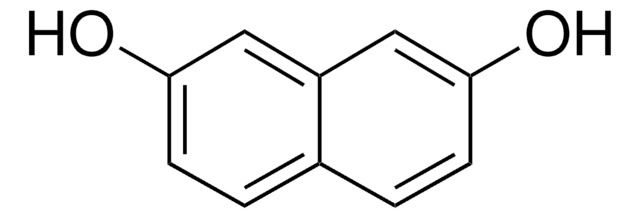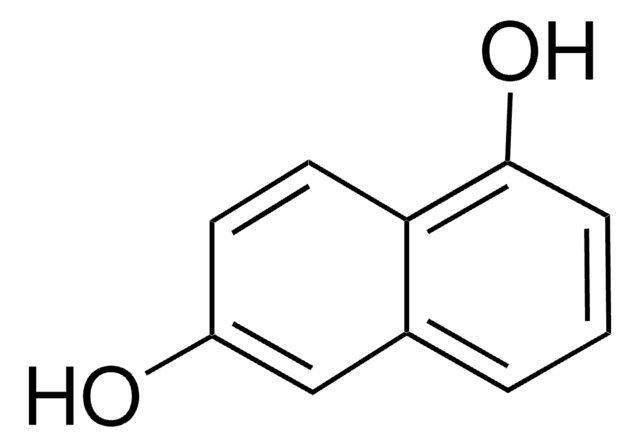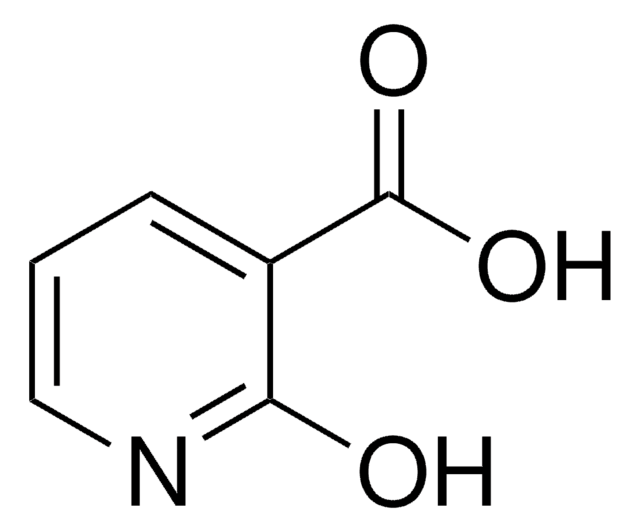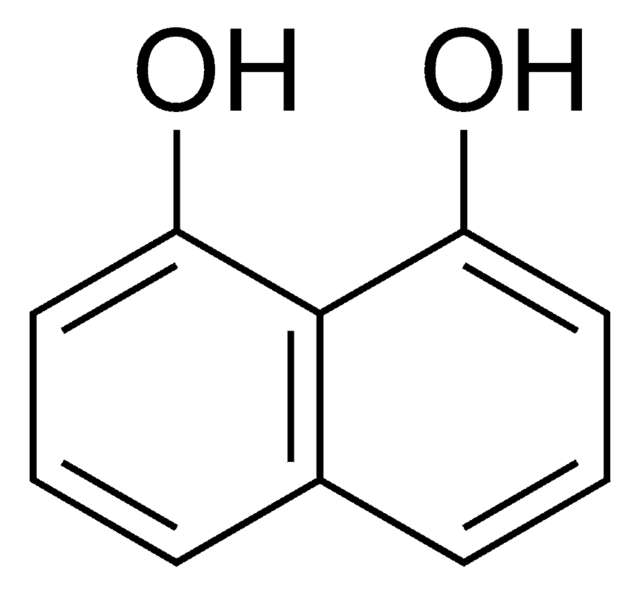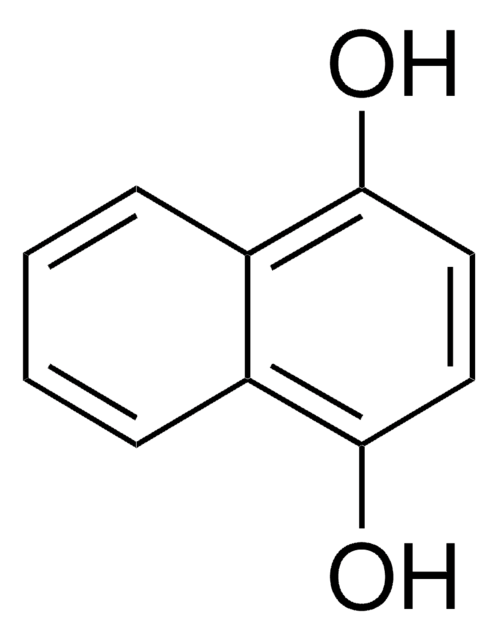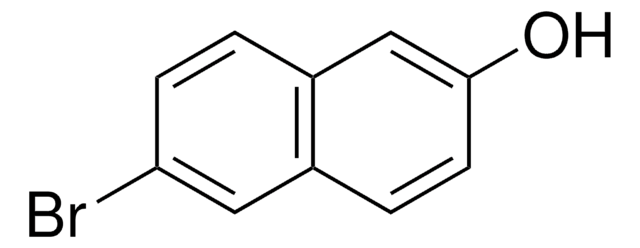275603
2,6-Dihydroxynaphthalin
98%
Synonym(e):
2,6-Naphthalindiol
Anmeldenzur Ansicht organisationsspezifischer und vertraglich vereinbarter Preise
Alle Fotos(2)
About This Item
Lineare Formel:
C10H6(OH)2
CAS-Nummer:
Molekulargewicht:
160.17
Beilstein:
1238082
EG-Nummer:
MDL-Nummer:
UNSPSC-Code:
12352100
PubChem Substanz-ID:
NACRES:
NA.22
Empfohlene Produkte
Qualitätsniveau
Assay
98%
Form
solid
mp (Schmelzpunkt)
223-225 °C (lit.)
SMILES String
Oc1ccc2cc(O)ccc2c1
InChI
1S/C10H8O2/c11-9-3-1-7-5-10(12)4-2-8(7)6-9/h1-6,11-12H
InChIKey
MNZMMCVIXORAQL-UHFFFAOYSA-N
Suchen Sie nach ähnlichen Produkten? Aufrufen Leitfaden zum Produktvergleich
Anwendung
2,6-Dihydroxynaphthalene was used in the synthesis of 1,5-dichloro-2,6-diethynylnaphthalenes. It was also used in the preparation of first-generation rotaxane dendrimer.
Signalwort
Warning
H-Sätze
Gefahreneinstufungen
Eye Irrit. 2 - Skin Irrit. 2 - STOT SE 3
Zielorgane
Respiratory system
Lagerklassenschlüssel
11 - Combustible Solids
WGK
WGK 2
Flammpunkt (°F)
Not applicable
Flammpunkt (°C)
Not applicable
Persönliche Schutzausrüstung
dust mask type N95 (US), Eyeshields, Gloves
Hier finden Sie alle aktuellen Versionen:
Besitzen Sie dieses Produkt bereits?
In der Dokumentenbibliothek finden Sie die Dokumentation zu den Produkten, die Sie kürzlich erworben haben.
Kunden haben sich ebenfalls angesehen
Shoji Shinamura et al.
The Journal of organic chemistry, 75(4), 1228-1234 (2010-01-27)
In this paper we present the synthesis, structures, characterization, and applications to field-effect transistors (FETs) of naphtho[1,2-b:5,6-b']dithiophene (NDT) and -diselenophene (NDS) derivatives. Treatment of 1,5-dichloro-2,6-diethynylnaphthalenes, easily derived from commercially available 2,6-dihydroxynaphthalene, with sodium chalcogenide afforded a straightforward access to NDTs
Soo-Young Kim et al.
Chemistry, an Asian journal, 2(6), 747-754 (2007-05-08)
By taking advantage of the fact that cucurbit[6]uril (CB[6]) forms exceptionally stable host-guest complexes with protonated amines, and that its homologue CB[8] can encapsulate a pair of electron-rich and electron-deficient guest molecules to form a stable 1:1:1 complex, we synthesized
Alberto Macone et al.
Bioorganic & medicinal chemistry, 17(16), 6003-6007 (2009-07-21)
Aromatic substrates tyrosol (p-hydroxyphenylethanol) and 2,6-dihydroxynaphthalene (2,6-DHN) were converted into chromane derivatives by means of chemoenzymatic reactions catalyzed by the aromatic prenyltransferase of bacterial origin NovQ, using dimethylallyl bromide as allylic substrate instead of the natural isoprenyl pyrophosphate substrate. Stereoselective
Mårten Jacobsson et al.
Journal of medicinal chemistry, 49(6), 1932-1938 (2006-03-17)
The antiproliferative activity of the 14 isomeric monoxylosylated dihydroxynaphthalenes has been tested in vitro toward normal HFL-1 and 3T3 A31 cells as well as transformed T24 and 3T3 SV40 cells. The antiproliferative effect toward HFL-1 cells was correlated with the
Dieter Schemeth et al.
Analytica chimica acta, 1038, 182-190 (2018-10-04)
In this study, we focus on isolation and fractionation strategies by solid phase extraction (SPE) for a broad range of environmentally related organic acids. These emerging potential contaminants are primary degradation products of spilled petrogenic compounds but little attention has
Unser Team von Wissenschaftlern verfügt über Erfahrung in allen Forschungsbereichen einschließlich Life Science, Materialwissenschaften, chemischer Synthese, Chromatographie, Analytik und vielen mehr..
Setzen Sie sich mit dem technischen Dienst in Verbindung.
